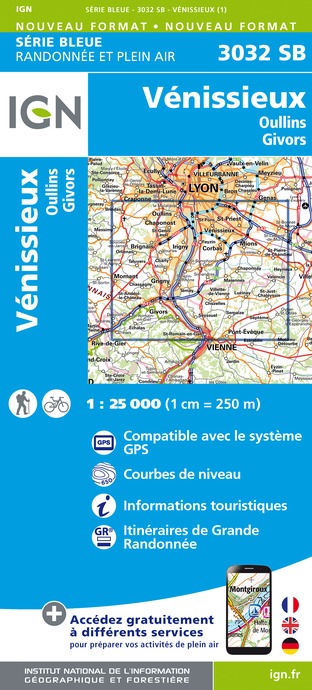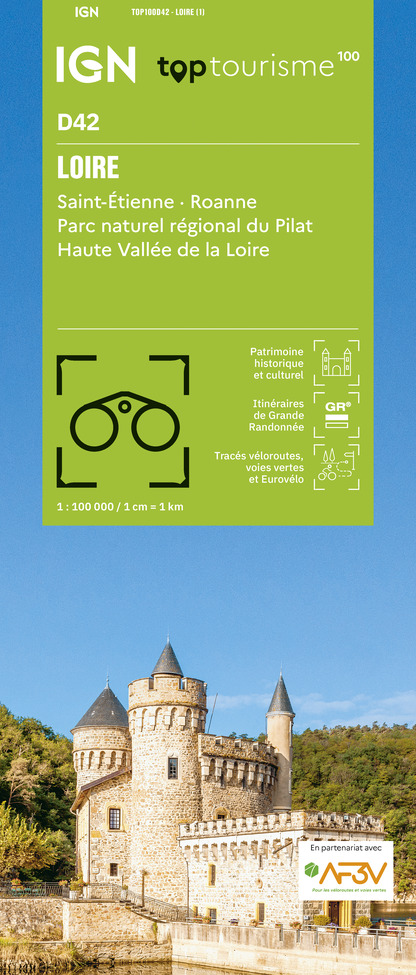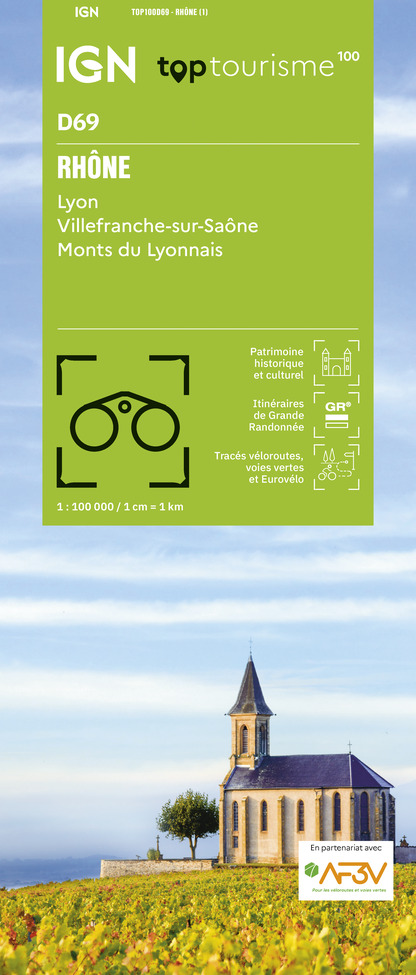Tours
Activities
Places of interest
Where to eat
Where to sleep
Discover Saint-symphorien-d'ozon, jewel of Rhône valley
Are you in charge of the destination?Nestled in the heart of Rhône, Saint-symphorien-d'ozon is a must-visit destination for nature lovers and culture enthusiasts. This charming town is surrounded by breathtaking landscapes that offer a wide range of outdoor activities. Wander through the hiking trails that wind through the surrounding hills and valleys, or rent a bike to explore the scenic cycling paths.
History buffs will enjoy the...See more
History buffs will enjoy the...See more
Walking around Saint-symphorien-d'ozon
See more suggestionsAccessible hikes near Saint-symphorien-d'ozon.
See more suggestionsWhat to do in Saint-symphorien-d'ozon
See more suggestionsBook your activities in Saint-symphorien-d'ozon now and get ready for adventure.
See more suggestionsIGN cards

3032SB - VÉNISSIEUX OULLINS GIVORS
Editor : IGN
Collection : TOP 25 ET SÉRIE BLEUE
Scale : 1:25 000
13.90€

TOP100D42 - LOIRE SAINT-ÉTIENNE ROANNE PARC NATUREL RÉGIONAL DU PILAT HAUTE VALLÉE DE LA LOIRE
Editor : IGN
Collection : TOP 100
Scale : 1:100 000
8.40€

TOP100D69 - RHÔNE LYON VILLEFRANCHE-SUR-SAÔNE MONTS DU LYONNAIS
Editor : IGN
Collection : TOP 100
Scale : 1:100 000
8.40€

TOP100D01 - AIN BOURG-EN-BRESSE AMBÉRIEU-EN-BUGEY PAYS DE GEX
Editor : IGN
Collection : TOP 100
Scale : 1:100 000
8.40€

202 JURA ALPES DU NORD
Editor : IGN
Collection : TOP 200
Scale : 1:200 000
6.80€

88403 - LYON ET SES ENVIRONS
Editor : IGN
Collection : DÉCOUVERTE DES VILLES
Scale : 1:80 000
5.70€

D38 ISÈRE
Editor : IGN
Collection : CARTES DÉPARTEMENTALES IGN
Scale : 1:150 000
5.90€

D42-43 LOIRE HAUTE-LOIRE
Editor : IGN
Collection : CARTES DÉPARTEMENTALES IGN
Scale : 1:150 000
5.90€

D01-69 AIN RHÔNE
Editor : IGN
Collection : CARTES DÉPARTEMENTALES IGN
Scale : 1:150 000
5.90€

EUROPE
Editor : IGN
Collection : DÉCOUVERTE DES PAYS DU MONDE IGN
Scale : 1:2 500 000
7.00€
What to visit in Saint-symphorien-d'ozon
See more suggestionsVisit the museums and galleries of Saint-symphorien-d'ozon.
See more suggestionsWhere to eat in Saint-symphorien-d'ozon
See more suggestionsThe flavors of Saint-symphorien-d'ozon await you.
See more suggestionsWhere to sleep in Saint-symphorien-d'ozon
See more suggestionsExplore lodging possibilities in Saint-symphorien-d'ozon.
See more suggestions















































